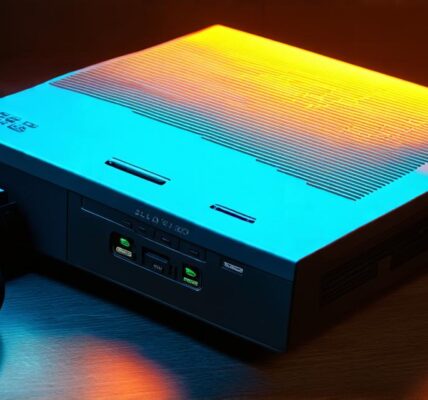As a game developer, you may be familiar with video game discs and their inner workings. However, for those who are new to the industry or simply curious about how these discs function, understanding their mechanics is essential to creating games that run smoothly and efficiently.
Physical Structure

Video game discs are typically made of polycarbonate or glass and come in various sizes and shapes. The most common sizes are 120mm, 160mm, and 250mm. These discs have a central hole for loading into the console and are secured with a locking mechanism to prevent accidental removal during gameplay.
The disc is divided into layers, with each layer representing a different part of the game. The topmost layer contains the game’s main menu and introductory material, while subsequent layers store the game’s data, including graphics, sound effects, and gameplay elements. These layers are arranged in a spiral pattern to minimize the amount of data that needs to be read or written during gameplay.
Data Storage Process
Video game discs use laser optics to read and write data onto the disc surface. The laser is controlled by an electronic circuit board (ECB) and directed towards a reading/writing head located on the end of an arm. This head moves across the disc surface, scanning each layer of the disc and storing or retrieving information as necessary.
When a game is loaded into the console, the ECB sends a command to the reading/writing head to read data from the appropriate layer. The head then moves to the correct location on the disc and begins scanning the surface, translating the laser’s light into electrical signals that are sent back to the console’s central processing unit (CPU).
Data is stored on the disc in a format known as magnetic data, where each bit of information is represented by a tiny magnetic field. This allows for high-density storage of data and enables the use of advanced compression techniques to reduce file size and improve loading times.
One important aspect of video game discs is their ability to read and write data in both directions. This means that game developers can write new content to the disc, update existing files, or even delete unused data to free up space on the disc. This level of flexibility is critical for game development, as it allows developers to iterate and refine games without having to start from scratch each time.
Security Measures
To prevent unauthorized access to game content, video game discs employ various security measures. These include encryption algorithms that scramble data during storage, making it difficult for unauthorized users to read or write information. Additionally, some discs use digital rights management (DRM) technology to restrict the number of times a game can be played or copied.
Real-Life Examples
One real-life example of how video game discs work can be seen in the development of Sony’s PlayStation 4 game console. The PlayStation 4 uses Blu-ray discs, which are similar in size and shape to traditional CDs and DVDs. These discs have a storage capacity of up to 50GB and use laser optics to read and write data at high speeds.
Another example is the development of Nintendo’s Wii U game console, which uses proprietary discs called OptiDiscs. These discs have a storage capacity of up to 32GB and use advanced compression techniques to store game content. OptiDiscs also employ security measures to prevent unauthorized access to game files.
FAQs
1. How do video game discs work?
Video game discs use laser optics to read and write data onto the disc surface. The laser is controlled by an electronic circuit board (ECB) and directed towards a reading/writing head located on the end of an arm. This head moves across the disc surface, scanning each layer of the disc and storing or retrieving information as necessary.




